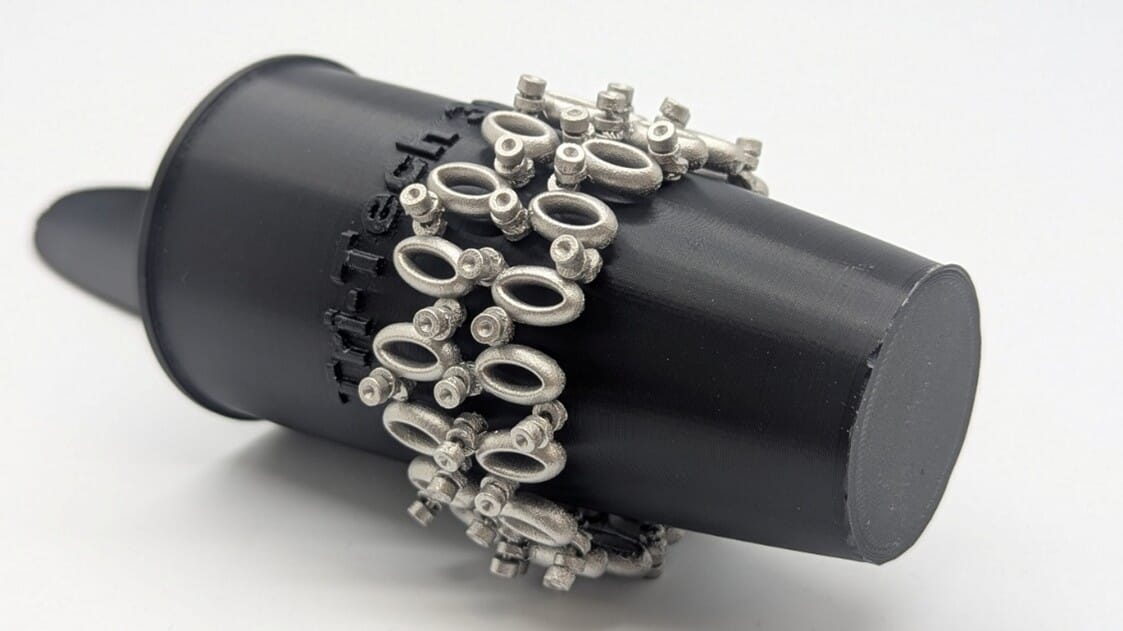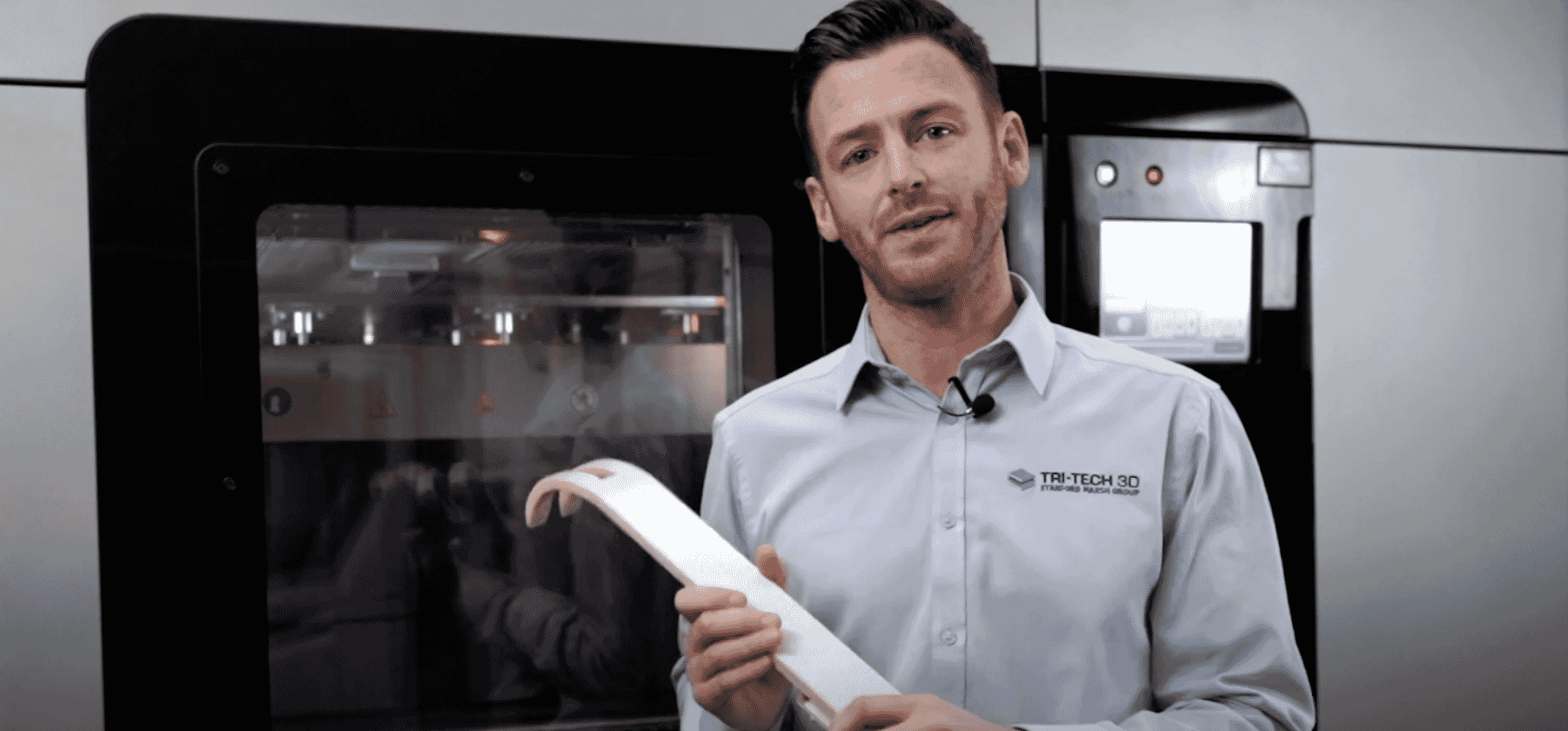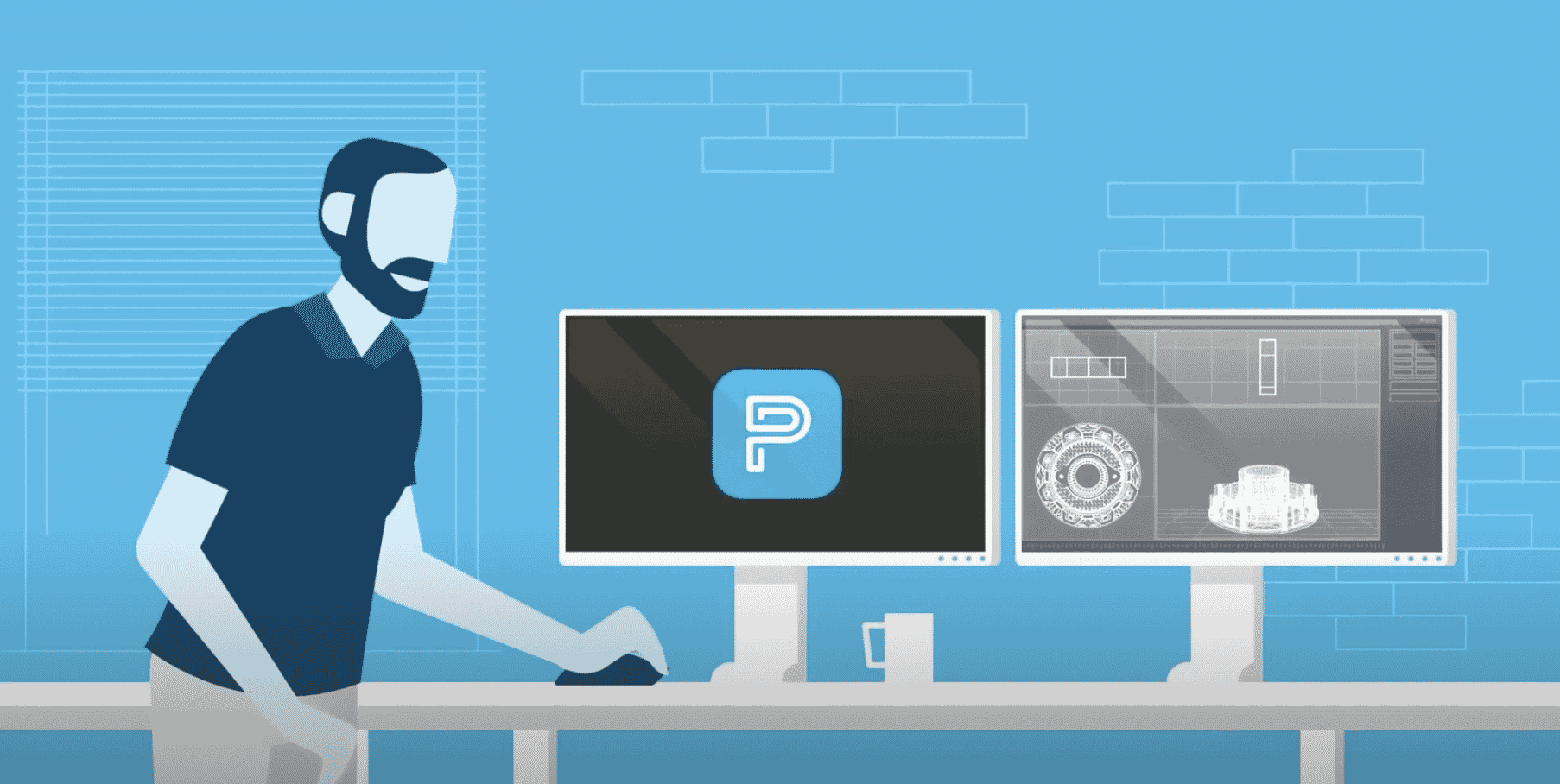From printing bed to track, saving time and money
3D printing in the automotive industry has become a staple of successful businesses. As the needs of high performing automotive brands have evolved and become ever more constrained, the range of applications for additive manufacturing has grown exponentially. The introduction of 3D printers to the manufacturing process has unlocked doors for motor vehicle production, from improved lead times, to prototyping improvements and the overall design of the end product. At Tri-Tech 3D we’re excited to explain how the pioneering industry users of 3D printing have been pushing the boundaries of manufacturing.

Our Stratasys sales specialist Joe Godfrey deals heavily with automotive companies, so he seemed like the perfect person to ask about his thoughts on 3D print in this exciting industry:
It’s becoming the norm for automotive companies to utilise additive manufacturing in with end use applications to help reduce lead time, time to market and produce complex geometry which otherwise would be far more complicated using traditional methods. We’re seeing our automotive customers using AM for an array of applications, helping reduce production times by 85%
Complex parts
It’s been heavily documented that parts with complex geometries can require a large amount of time to machine by traditional methods. But beyond this, the designs being produced through additive manufacturing are often just as accurate. Reducing the development time and cost for both prototypes and end-use product is possible through removing the need for tooling and subsequent assembly. The functionality and rigidity of these durable parts means that traditional manufacturing isn’t even slightly missed.
Furthermore, small batches of parts used specifically within the automotive industry can be produced – with greater customisation providing superior value for motor vehicle brands. Designing and implementing new, delicate designs with high performance materials keeps performance high in an industry where it’s fundamentally imperative.
End use – Race Ready
Stratasys FDM printers have a particularly close link with the automotive industry, with the technology being recently used in Formula 1 racing. McLaren received a performance boost through the employment of additive manufacturing. Multiple printers and materials were used in the production of the car, as different parts require subtly different considerations. All of the parts listed below were used in the final car, showing that 3D printing is reliable enough for high-importance scenarios.

A hydraulic line bracket was used to attach the hydraulic line to the car. Being a structural part, the material used was Nylon 12CF, due to the high strength-to-weight ratio. If the structural elements of the car are unreliable then there is a fundamental problem, however the lightweight nature of the material still provides far greater performance than other materials with the same strength. Not to mention the bracket was produced in just four hours! Compared to traditional methods that would have required around two weeks to create, it’s very impressive.
The more flexible radio harness location boot was a design born through necessity rather than the need for performance. When the wire on a new data communication system was obscuring the driver’s view. The solution required the flexible, rubber-like materials that the J750 can print to make the boot that held the wires away from view. What’s more, three different designs were iterated in a single day, shedding immediate light on the prototyping power of 3D printing.
Carbon fibre composite brake cooling ducts were designed to increase rear downforce, notably improving car performance. The part was manufactured in carbon fibre composites using ULTEM 1010 to create the high temperature mould – as the material was perfect for the resistant needs of the part.
Time to market
Briggs Automotive Company (BAC) released their Mono R, a supercar with a complex design and years of thought and research behind it. The result is a lightweight motor vehicle with supreme performance, fully realised in a matter of months. The brief for the car was simple – to be “lighter, more efficient and slicker than any supercar before it.” This challenge was completed in minimal time once the project was underway, due to the company fully embracing additive manufacturing technology (fulfilled by Tri-Tech 3D.)

One way in which the manufacturing of the car was hugely accelerated was in the design and testing of the Mono R’s air intake, just one of many innovative features of the car. The unique and extremely complex geometry gave the air box its ability to provide improved performance. The parts were 3D printed in both the prototyping phase and during final assembly. Prototyping with additive manufacturing meant BAC’s rigorous demands and time constraints were met entirely – but without the expensive tooling, carbon fibre production and labour-intensive process.
The lead time to produce one prototype of the air box using traditional machining methods surpassed two weeks. If there were any problems with the prototype produced, then any design iterations would add double that amount of time. This was a delay we just couldn’t afford.
– Ian Briggs, BAC Design Director.
The automotive industry is really starting to take on a new form with the help of 3D printing. With a wealth of knowledge in automotive 3D printing solutions, we know how additive manufacturing can help you overtake the competition. Give us a call today to find out more!

















